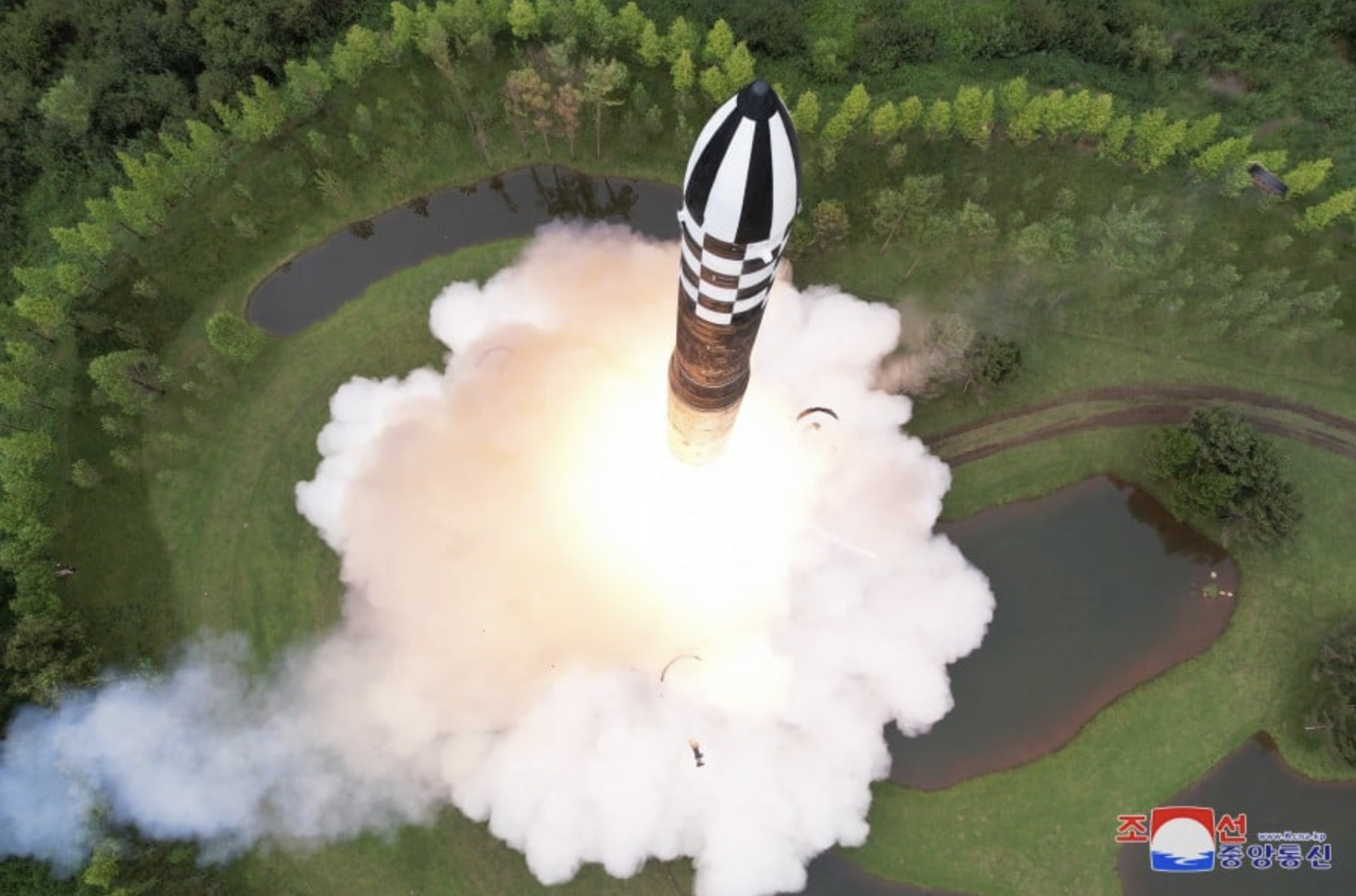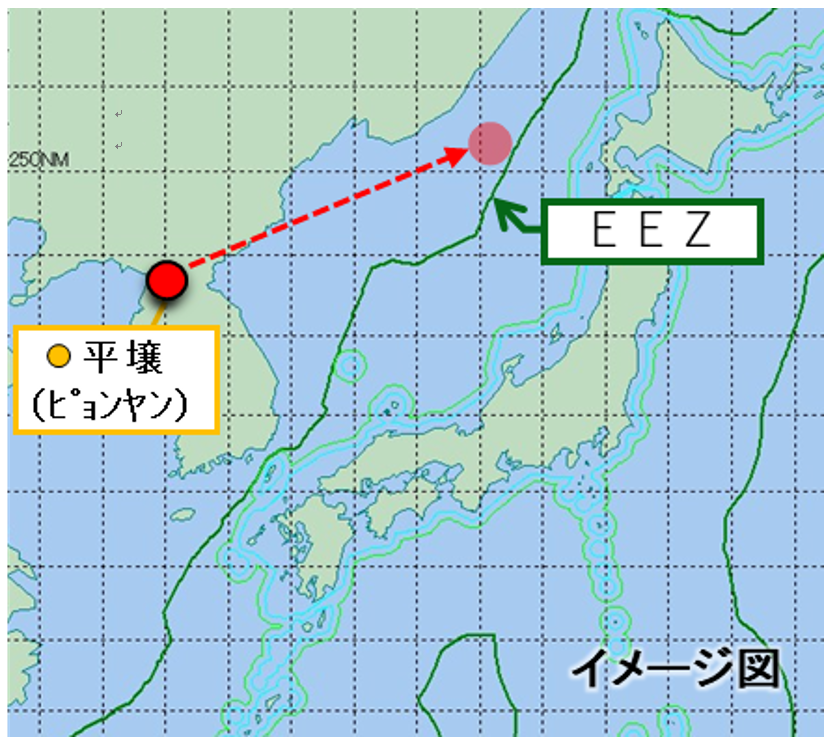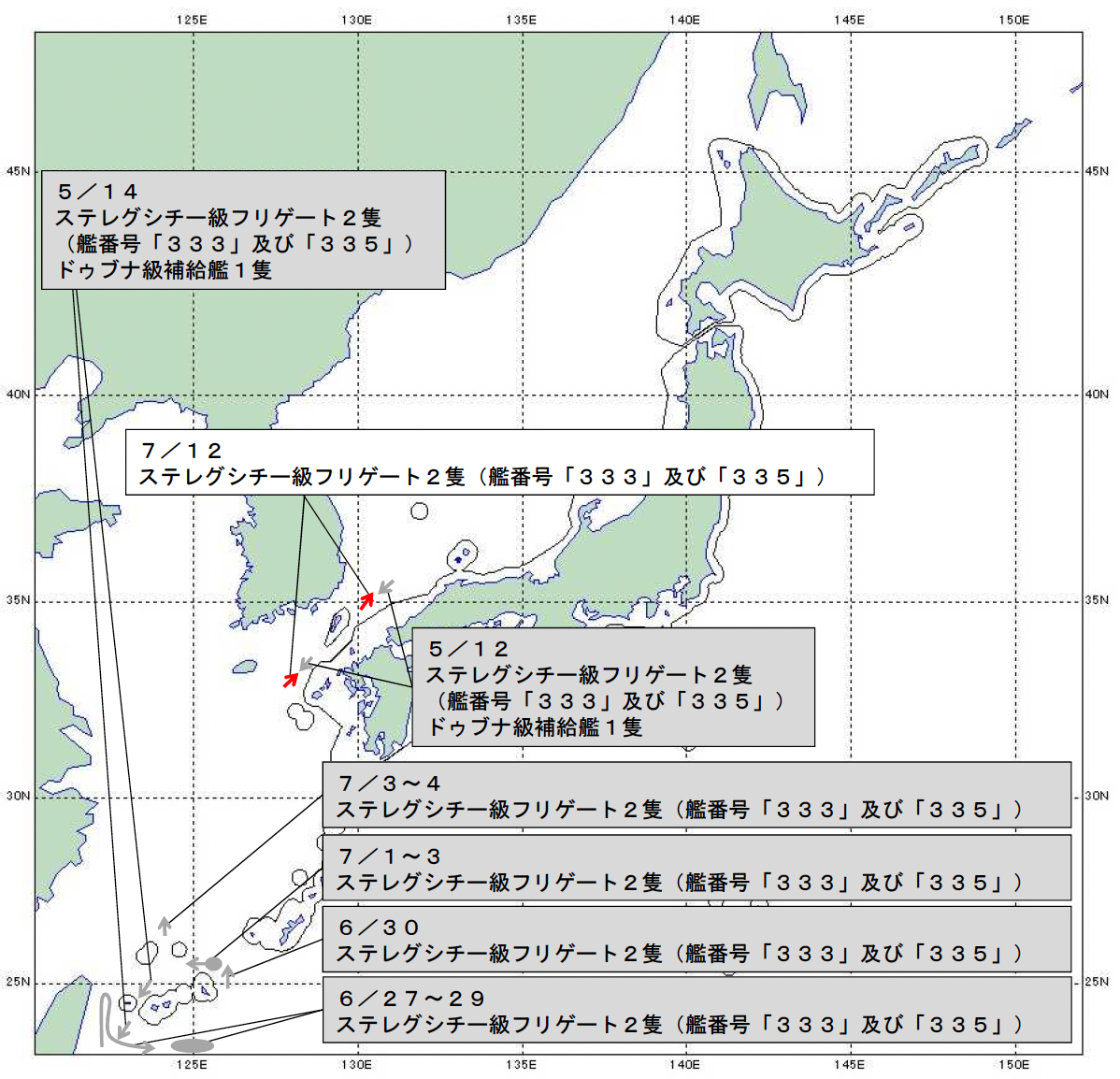
North Korea launched an Intercontinental Ballistic Missile (ICBM) Wednesday morning that landed in the Sea of Japan, drawing criticisms from the U.S. and the United Nations.
North Korea launched an ICBM, shortly before 10 a.m. local time, from the area near the North Korean capital of Pyongyang, the Japan Ministry of Defense said in a Wednesday release. The ICBM flew for 74 minutes with a flight distance of 1000km and a maximum altitude of 6000km before reaching the Sea of Japan. It was presumed to have fallen in a location 250km west of Okushiri Island, Hokkaido, around 11:12 a.m. The release stated that Japan had lodged a protest with North Korea and condemned the launch.
The United Nations, as well as the G7 group of industrialized nations, condemned the launch. Military leaders from the U.S., Japan and the Republic of Korea, who were holding a trilateral meeting in Hawaii at the time, also criticized the launch.
Since April 22, Japan has deployed ground-based Patriot PAC-3 surface-to-air missile systems in its southwest islands, along with its Ballistic Missile Defence (BMD) capable destroyers around the East China Sea and Sea of Japan, as a precaution.
North Korea’s failed satellite launch on May 31 and Wednesday’s launch has not crossed the threshold for an intercept. The Japanese MOD subsequently issued a second release with a photo and video taken by a Japan Air Self Defense Force (JASDF) F-15 fighter aircraft showing suspected components from the missile descending to the ground.
North Korea launched a Hwasong-18 ICBM, North Korea’s state-run Korean Central News Agency reported. The test-firing was aimed at re-confirming the technical creditability and operational reliability of the ICBM, according to the report.

The missile reached a maximum altitude of 6,648.4 km and flew a distance of 1,001.2 km for 74 minutes before accurately landing on the preset area in the open waters off the East Sea of Korea (the North Korean name for the Sea of Japan), according to Korean Central News Agency.
North Korea’s launch occurred the same day Chairman of the Joint Chiefs of Staff Gen. Mark A. Milley hosted a trilateral meeting at Camp Smith, Hawaii, with Japan Chief of Staff, Joint Staff, Gen. Yoshida Yoshihide and Chairman of the Republic of Korea Joint Chiefs of Staff, Gen. Kim Seung Kyum. The three Chiefs issued a joint statement condemning the launch.
“The conclusion of the meeting coincided with another missile launch by the Democratic People’s Republic of Korea (DPRK), in violation of unanimously approved UN Security Council resolutions,” reads the statement. “The leaders, while monitoring the situation, coordinated in real-time to develop bilateral and trilateral response options to enhance the security of the Korean Peninsula and the region. The three Chiefs of Defense condemn DPRK’s provocative actions, which highlight the importance of the trilateral commitment in the face of a blatant DPRK threat.”
Milley will visit Japan’s Minister of Defense, Yasukazu Hamada at the Defense Ministry in Tokyo Friday for an order conferment ceremony and courtesy call, according to a Thursday Japan Ministry of Defense release.
Japan and the U.S also responded to the North Korean launch on Wednesday with a show of resolve air exercise the same day, according to a Wednesday JSO release.
“Japan Self-Defense Forces and U.S. Armed Forces conducted a bilateral exercise on Wednesday, July 12 amid an increasingly severe security environment surrounding Japan, including North Korea’s ICBM-class Ballistic Missile launch,” reads the release. “This bilateral exercise reaffirms the strong intention between Japan and the United States to respond to any situation, the readiness of JSDF and U.S. Armed Forces, and further strengthens the deterrence and response capabilities of the Japan-U.S. Alliance.”
The exercise involved four F-2 fighters of the JASDF 8th Air Wing and two U.S. F-15 fighters, as well as a KC-135 tanker conducting tactical training in the airspace west of the main island of Kyushu.

JMSDF Image
The JSO also issued a release Thursday on the movement of the Russian Navy corvettes RFS Sovershenniy (333) and RFS Gromkiy (335). At 11 a.m. Wednesday, the two corvettes were sighted sailing northeast in an area 110km southwest of Tsushima and subsequently transited northeast through the Tsushima Strait to enter the Sea of Japan.
Japan Maritime Self Defense Force (JMSDF) fast attack craft JS Otaka (PG-826) shadowed the Russian ships.
Sovershenniy and Gromkiy, both of the Russian Navy Pacific fleet are likely heading home, having deployed in the second week of May for an approximately six weeks deployment in South-East Asian waters, which included participation in the Indonesian Navy’s Multinational Naval Exercise Komodo held in Makassar, Sulawesi.
The two Russian ships had arrived in Shanghai, China, on June 5 for a week-long visit, and China’s Ministry of National Defense said Wednesday the Russian Navy ships left Tuesday.
During the visit, the Russian ships conducted a joint maritime exercise with People’s Liberation Army Navy (PLAN) destroyer CNS Taiyuan (131) in the waters near the Yangtze River estuary, during which communication training, formation maneuver and maritime search and rescue drills were carried out.





